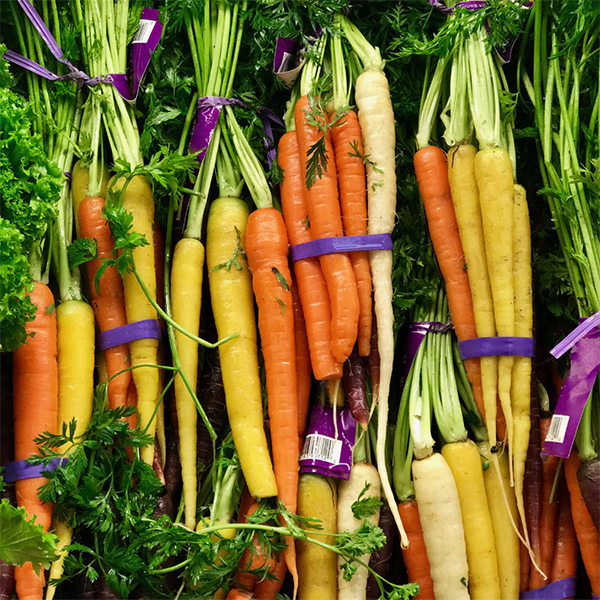The Organic Trade Association today released conclusive research that for the first time links economic health at the county level to organic agriculture, and shows that organic food and crop production–and the business activities accompanying organic agriculture–creates real and long-lasting regional economic opportunities.
The recently completed White Paper, titled “U.S. Organic Hotspots and their Benefit to Local Economies,” was prepared for the Organic Trade Association (OTA) by Penn State Agricultural Economist Dr. Edward Jaenicke. It finds organic hotspots–counties with high levels of organic agricultural activity whose neighboring counties also have high organic activity–boost median household incomes by an average of $2,000 and reduce poverty levels by an average of 1.3 percentage points.
Organic activity was found to have a greater beneficial economic effect than that of general agriculture activity, and even more of a positive impact than some major anti-poverty programs at the county level.
“We know that organic agriculture benefits our health and our environment,” said Laura Batcha, CEO and Executive Director of OTA. “This significant research shows organic can also benefit our livelihoods and help secure our financial future.”
“Organic agriculture can be used as an effective economic development tool, especially in our rural areas,” said Batcha. “The findings of this research show organic certifiers and the transfer of knowledge and information play a critical role in developing organic. And it provides policymakers with an economic and sound reason to support organic agriculture and to create more economy-stimulating organic hotspots throughout the country.”
Organic is one of the fastest-growing sectors of the U.S. food industry. Organic food sales in 2015 jumped by 11 percent to almost $40 billion, far outstripping the 3 percent growth rate for the overall food market. Organic crops command a significant price premium over conventionally grown crops. As a result, interest in organic at the production level has grown as the demand for organic has risen. More farmers are transitioning to organic production, more organic businesses are sprouting.
But what does all this interest in organic and organic activity mean for local economies?
“This research systematically investigates the economic impacts of organic agriculture,” noted Jaenicke. “Its important findings show that organic contributes to the economic health of local economies. The growing market interest in organic agriculture can be leveraged into effective policy for economic development.”
Compelling findings with significant implications
The White Paper summarizes and discusses three research papers that investigate organic agriculture hotspots in the U.S. and systematically assesses the impact of organic agriculture on local economies. It identifies 225 counties across the United States as organic hotspots, then looks at how these organic hotspots impact two key county-level economic indicators: the county poverty rate and median household income.
Organic hotspots are as diversified as the organic industry, and represent the various kinds of organic agricultural activity and accompanying businesses: crop production, livestock production, organic processors. Organic hotspots are found throughout the country, but specific examples of organic hotspots include Monterey County in California, Huron County in Michigan, Clayton County in Iowa, and Carroll County in Maryland.
The White Paper also identifies what factors create organic hotspots, how the effect of organic agricultural hotspots compare with those of general agriculture (combined organic and conventional agriculture), and finally recommends specific policies to foster more organic economic hotspots throughout the nation.
The findings are compelling and conclusive. Specifically, the research finds that:
- Counties within organic hotspots have lower poverty rates and higher median annual household incomes. On average, county poverty rates drop by 1.3 percentage points, and median income rises by over $2,000 in organic hotspots. The same beneficial results are not found for general agricultural hotspots. Also, organic hotspots were found to have a greater positive impact at the county level than such major anti-poverty programs as the Supplemental Nutrition Assistant Program and the Special Supplemental Nutrition Program for Women, Infants, and Children.
- Outreach and knowledge transfer are critical in creating organic hotspots. The prevalence of outreach services by organic certifiers is found to play one of the strongest roles in organic hotspot formation. Also, whether a certifier is government-sponsored, by a state department of agriculture for example, is another key factor in enabling organic hotspots.
- Organic agriculture can be used as an economic development tool. Policymakers at all levels—local, state and national—have a proven economic reason to support organic agriculture and to create more economy-stimulating organic hotspots.
The research contained five policy recommendations as a result of the findings:
- Promote organic agriculture at the federal, state and local level.
- Focus on rural development, organic transition, capital structures and barriers to investment.
- Expand outreach efforts and facilitate network effects.
- Target specific geographic areas for development.
- Build broader coalitions to help promote organic agriculture.
The U.S. Organic Hotspots and their Benefit to Local Economies White Paper is available for download, along with an interactive map that identifies hotspots across the country, at www.ota.com/hotspots.
The Organic Trade Association (OTA) is the membership-based business association for organic agriculture and products in North America. OTA is the leading voice for the organic trade in the United States, representing over 8,500 organic businesses across 50 states. Its members include growers, shippers, processors, certifiers, farmers' associations, distributors, importers, exporters, consultants, retailers and others. OTA’s Board of Directors is democratically elected by its members. OTA's mission is to promote and protect ORGANIC with a unifying voice that serves and engages its diverse members from farm to marketplace.










